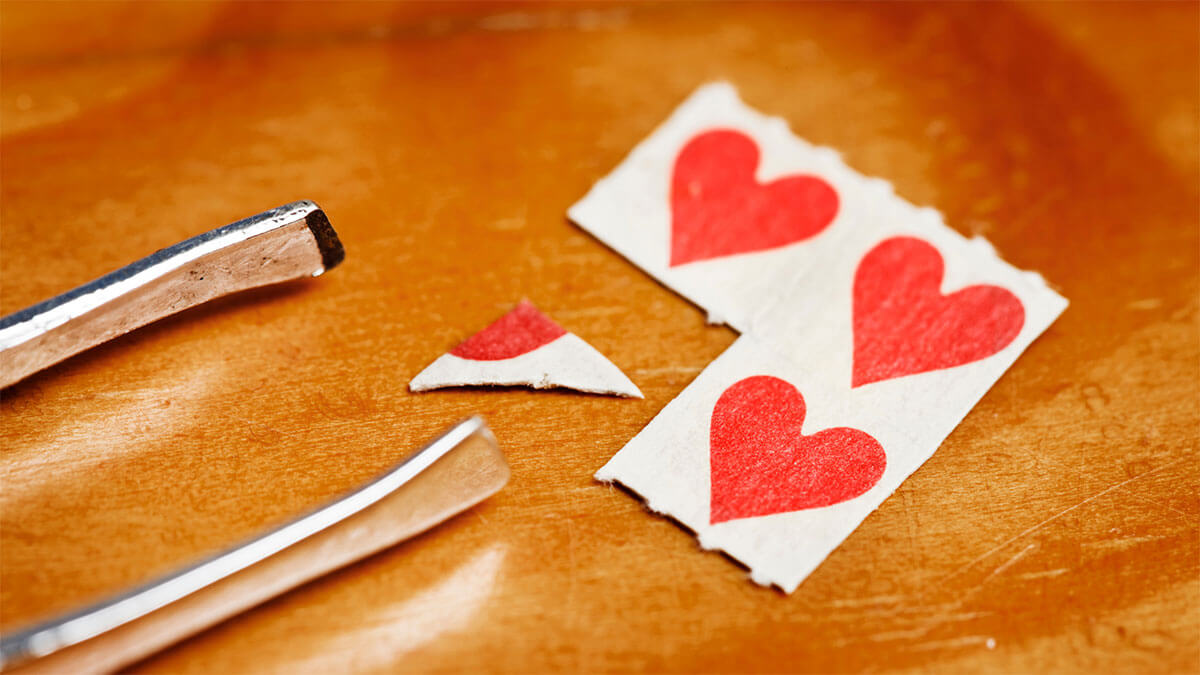Medical Editor: Dr. David Cox, PhD, ABPP
What is LSD?
LSD (Lysergic Acid Diethylamide), often referred to as “acid”, has been around in its current form for decades. LSD was first synthesized in 1938 by the Swiss chemist Albert Hofmann while he was working for Sandoz laboratories researching compounds that would act as respiratory and circulatory stimulants. LSD’s psychoactive properties weren’t discovered until 19th April 1943, which later came to be known as Bicycle Day, when Hoffman intentionally ingested the substance to ascertain its effects.
While LSD is a synthetic substance and was created in a lab, it is derived from ergot, which is a fungus that grows on rye and other grains. Ergot was used medicinally by midwives to help ease labor pains as early as the 1500s.
Scientific Research on LSD
Since then, thousands of studies have been done on the effects of LSD. In recent decades it has been used both recreationally and for therapeutic purposes. Clinical research has shown that this potent psychedelic substance can be highly effective when treating alcohol and opiate addictions.
Many people are apprehensive about taking LSD because of the cultural baggage surrounding its use. During the 1960s counterculture movement, LSD became popularised through the likes of Timothy Leary, an ex-Harvard psychologist who publicly encouraged young Americans to “turn on, tune in, drop out.” Rising in popularity amongst America’s youth, LSD quickly gained a reputation as a party drug. Adding to this, its use was demonized by the Nixon administration who declared Timothy Leary “the most dangerous man in America” and formally declared the “War on Drugs”.
However, as scientific research into psychedelics continues to grow, it has been shown that LSD can help people have meaningful experiences, giving way to insightful new ideas. To some extent, the effects of LSD can be unpredictable, but the most common ones include altered and/or enhanced sensory perception and changes in thought patterns.
People who are under the influence of LSD may experience visual and other sensory distortions, changes to their thought processes, as well as intense emotions such as euphoria. People have reported experiencing surprising or new insights while on the drug.
Research has identified a neural system, the Default Mode Network(DMN), that is typically activated when a person is daydreaming or otherwise engaged in non-directive thought or tasks. It is believed that LSD and other psychedelics may interact with the DMN in producing the effects that occur while on the substance.
What Are the Different Forms of LSD?
LSD comes in several different forms and consumption methods. There are over 100 types of LSD on the market today and they fall into four main categories: blotter paper, liquid solutions, tablets/microdots, and gelatin sheets. LSD on blotter paper is the most commonly found form of the substance.
Blotter Paper
LSD blotter is typically divided into about 1/4″ squares referred to as “tabs”. The dose in a single tab may vary, yet the full experience of LSD can be expected somewhere between 100-200 ug of LSD. It is often suggested that a lower dose be taken when using LSD for the first time. Paper blotters are created by taking a sheet of absorbent paper and soaking it in a liquid dilution of LSD. The dosage can vary greatly from one batch to another. Because of the method used to make blotter tabs, there is no practical way to know the exact dosage of a particular tab without either testing it or knowing the chemist. Adjacent tabs on a sheet will usually contain very similar levels of LSD.
Liquid LSD
LSD is water-soluble and is usually dissolved in alcohol or water. There are two main methods of taking liquid LSD. One way is to add it to a beverage and drink it. The second method, which requires more caution but produces a stronger effect on the body more quickly, is to place drops of the liquid underneath the tongue. A single drop of liquid LSD could be very strong so it’s important to measure your dose to avoid ingesting too much and to minimize undesirable effects.
Gelatin or Sugar Cubes
LSD in gelatin form is also known as “window panes”. It is made by mixing liquid LSD with gelatin and forming it into small, thin squares. Similarly, liquid LSD can be mixed into sugar cubes.
Is LSD safe?
When deciding on whether to take LSD or not, safety should be the number one priority. No matter the purpose for or method of taking LSD, one should take note of the following safety precautions:
Don’t take LSD if you are pregnant or have certain health conditions
Avoid taking LSD if you are pregnant or have certain health conditions. If someone chooses to take LSD they should be in generally good health. If there is personal or family history of schizophrenia, bipolar disorder or other psychotic disorders, LSD and other psychedelics should be avoided.
Don’t take LSD with other medications
Avoid taking LSD when taking medications that it may interact adversely with. One should avoid the use of LSD while taking tricyclic antidepressants or lithium. Mixing LSD with MDMA or cannabis may increase the chances of having a challenging trip because it can increase the hallucinogenic effects, although some people choose to mix LSD with MDMA or cannabis to experience a different trip and, in the case of cannabis, perhaps reduce nausea.
Always test your LSD
Test your LSD. It is important to be 100% sure that what is being ingested is pure LSD. LSD and other psychedelic drugs, when purchased from non-reputable sources, can sometimes be mixed with other dangerous substances. LSD should be purchased from a reputable source and tested for purity.
Get a sober sitter
Have a trusted, sober sitter who is trusted and experienced in supporting psychedelic sessions. A sitter’s job is to be present with the person taking LSD to help ensure a safe and positive experience. Having a trusted sober guide will reduce the chances of a bad trip. This person should be someone that the LSD-taker feels comfortable with and trusts. They should have a deep knowledge of psychedelics and the safety guidelines for use.
Consider set and setting
LSD experiences can be incredibly unsettling at times, especially if moods are low or thoughts take a somber turn. So-called “bad trips” can happen at any time and even experienced LSD-takers are not entirely immune to their effects. To reduce the chances of having a challenging trip, “set and setting” should be taken into consideration. Set and setting refer to the psychological, social, physical, and cultural parameters that are present during a psychedelic trip.
Set and Setting Checklist for LSD
Before deciding to use LSD, the following factors should be considered:
1. Mindset
What is the person’s mood like at the time of the LSD trip?
Have they prepared and thoroughly researched benefits and risks?
What does the person expect to gain from the experience?
A long-range mindset should also be considered. If the person has previous traumas in their life, this may resurface during the LSD trip.
2. Physical Setting
Is the person surrounded by people they trust, including an experienced guide or sitter? Is the person indoors in a therapeutic or clinical environment? Are they outdoors in a natural setting? Experiencing an LSD trip in a clinical setting or alongside an experienced guide will produce a much different experience than tripping at a party or club.
3. Comfort
Some people prefer to experience an LSD trip in darkness and with evocative music. Others prefer to experience a trip outdoors while connecting with nature. Much of the comfort factors will depend on the person’s individual preferences.
For more information on how to factor for set and setting on a psychedelic trip, check out this article.
LSD Dosage: How Much LSD Should Someone Take?
The appropriate dosage of LSD to take will be dependent on the desired outcome. LSD dosage can vary depending on the type of LSD as well as where it is sourced from but generally falls into one of two categories: a full dose, or a microdose.
Full LSD Dose
While there are no exact criteria for a full dose of LSD, and the dosage will likely differ in clinical settings versus recreational use, a full dose may range anywhere from 25ug to 200ug, with full effects being felt somewhere between 100-200ug. A microgram of LSD is equal to one-millionth of a gram, or one-thousandth of a milligram. If a person is seeking to experience a psychedelic trip, a full dose can be used. When taking LSD for the first time, one should start on the lower end to gauge how much is needed to produce the desired effects.
Microdosing LSD
Microdosing is an alternative option for those who are not looking to experience an LSD trip but would like to experience the health-related benefits of LSD. Microdosing has allowed people to explore some of the benefits of LSD without the fear and stigma that is typically associated with it. When done correctly, microdosing allows people to have a safe, therapeutic experience with perceived lasting benefits. Typically, a microdose of LSD is somewhere between one-tenth and one-twentieth of a full dose.
What Does an LSD Trip Feel Like?
A person’s unique body chemistry, as well as set and setting, plays a major role in how they experience the effects of LSD. Some people may have a stronger resistance to the drug and will experience less intense visions than others. As previously stated, many factors contribute to a personal experience with LSD, including dose, mindset, setting, and personal body chemistry. Some people may have a higher resistance to the drug and won’t experience visual effects as intensely as others.
Some people report that LSD helped them gain insight into themselves, their lives, and the nature of the universe. Steve Jobs, the founder of Apple, has been quoted as saying that his experience with LSD was “one of the most profound experiences” of his life. Some people associate psychedelic substances with greater spiritual awareness. When the moods of both the person taking LSD and those around them are buoyant or contented, the LSD experience can be highly enjoyable.
One of the most difficult things about a trip is that it’s impossible to know when a bad trip might occur (although taking safety precautions mentioned above can greatly reduce the chances of challenging experiences).
How Long Does LSD Take to Kick In, and How Long Will the Effects Last?
Because the effects of LSD are different for everyone, the amount of time it takes for effects to be felt will vary from person-to-person. Some people may notice the effects of LSD as soon as 10 and 40 minutes after ingestion, while for others, it could take up to two hours. Pharmacological measures such as “peak plasma level”, or the time at which the most LSD is in your bloodstream is in the range of 90 minutes after ingestion, and the “half-life”, or time at which the blood level is one half of the dose taken, is about 2.5 hours. Interestingly, the subjective effects will “peak” around 3-4 hours after ingestion, and effects can last anywhere from 8-16 hours. To add to LSD’s long duration, even when it wears off it is sometimes hard to fall asleep. For this reason, one should plan to take LSD on a day when there are no other responsibilities and there is no need to drive anywhere.
On a LSD trip, the person’s perception of time can extend and distort, making them feel like they’re on a forever-long journey. People who know this ahead of time—and can remember that they WILL eventually return to their normal state of consciousness—are less likely to experience anxiety or a bad trip.
The Bottom Line
LSD is a substance and should be respected and treated seriously. LSD should never be taken carelessly or without proper preparation. When used appropriately and in a safe and secure setting, people can have positive, meaningful experiences. It should be remembered to always obtain psychedelics from a trusted source and test for purity. Access to a trusted and experienced professional is also well advised.







